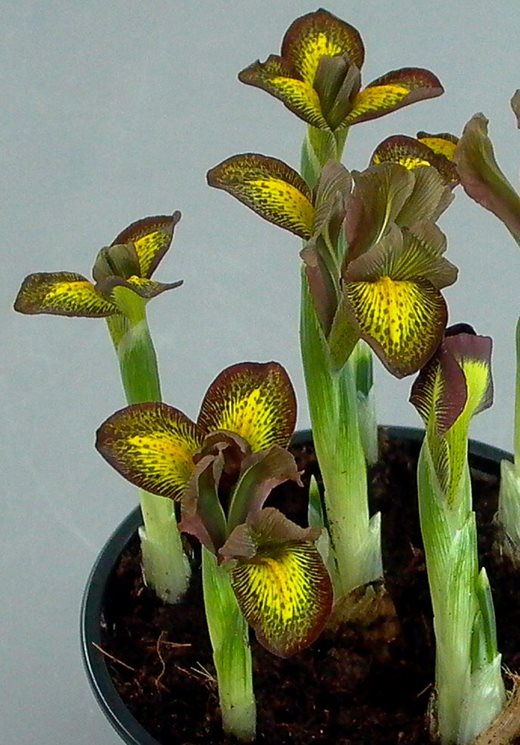'Mars Landing' is the latest in a series of new irises for pots, raised beds and rock gardens
It takes many many years to select and build up stocks of new spring-flowering irises – they need five years from seed sowing to flowering - but Canadian iris breeder Alan McMurtrie has been working with these reticulata irises for more than 30 years. In the past year or two the fruits of his diligence have become available, ‘Mars Landing’ is the latest of his introductions.

The unique colouring brings us bright yellow flowers that are bronzed at the edge, with delightful spotting and streaking in between. Developed from
Iris sophenensis and
I. danfordiae, the vivid yellow colouring is derived from
I. danfordiae, which also brings its relatively upright habit. As the flowers open and spread, intriguing misty colouring in shades of pale pink and pale blue are revealed. Online, ‘Mars Landing’ is often referred to by the code number
00-KV-3.
Ideal growing in pots of gritty compost, in the garden the usual recommendation is to plant the bulbs 6cm deep and 4cm apart in a sunny well-drained site. I always plant bulbs of this type more deeply, 10cm to the top of the bulbs, as I find this helps to stop them breaking up into a mass of small bulblets that fail to flower. Feeding with tomato feed two or three times between the flowers fading and the leaves dying down is also helpful.
Look out, too, for other Alan McMurtrie introductions including ‘Eye Catcher’, ‘Sea Breeze’ and ‘Sunshine’. Read more about his work in
this article from the RHS members' magazine
The Garden.
You can order bulbs of
Iris ‘Mars Landing’ from these
RHS Plant Finder nurseries.

